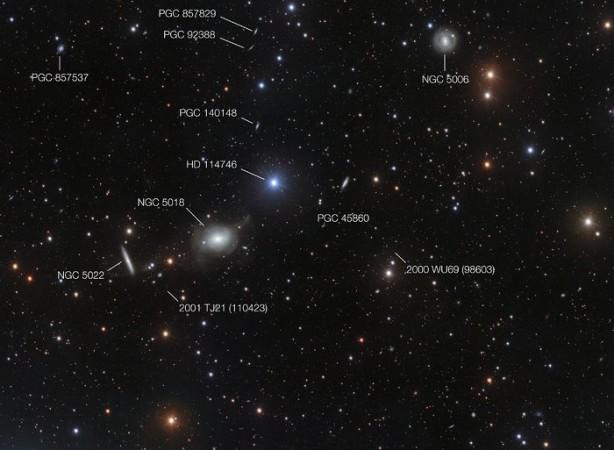
The European Southern Observatory that operates the Very Large Telescope (VLT) Survey Telescope in Chile has just captured and released a new image of distant galaxies. Surveys such as this one can help astronomers better understand how spiral galaxies are formed.
According to the ESO, while VLT has the capacity to observe even faint astronomical objects in great detail, for information about how different types of galaxies come to being, an even bigger telescope is needed.
Enter the VLT Survey Telescope (VST). It is like the VLT, but with a few upgrades, including a larger field of view. Designed to explore the night skies with great detail, the VST offers astronomers accurate astronomical surveys covering the entire southern hemisphere, says the ESO. Location of the telescope array itself makes for a better view as the dark skies in remote Chile. The location is far away from light pollution that plagues most parts of the world.

An international team of astronomers came together to put the VST to work and conducted what they call a VST Early-type Galaxy Survey (VEGAS).
The VEGAS mission was carried out to examine an entire collection of elliptical galaxies visible from the southern hemisphere, notes the report. VST has a sensitive OmegaCAM detector that was properly suited for this mission and the team, led by Marilena Spavone from INAF-Astronomical Observatory of Capodimonte set about capturing images of a range of such galaxies in several varied environments.
The galaxy in focus of this image is the NGC 5018, the white blob of dispersed light visible toward the centre of the image. The NGC 5018 is in the constellation Virgo, looking like a single source of light like a diffused blob. When viewed up close, however, it is possible to see a stretched out tidal tail made of a stream of gasses and stars. Galactic features like tidal tails and stellar streams happen as a result of galactic-scale interactions and offer clues as to what the structure and dynamics of galaxies are really like, notes the release.
The NGC 5018 is about 94 million light years from Earth.

















